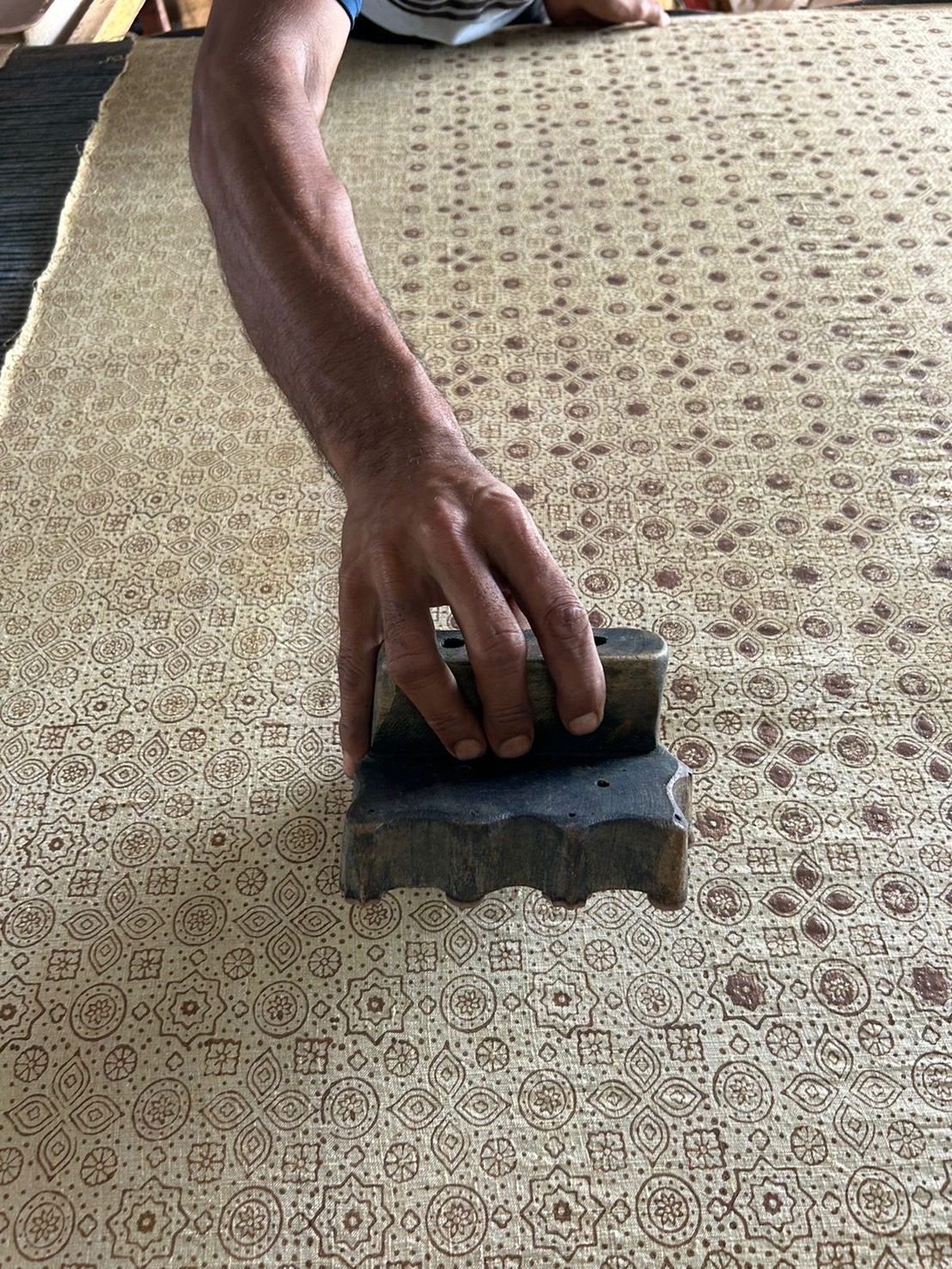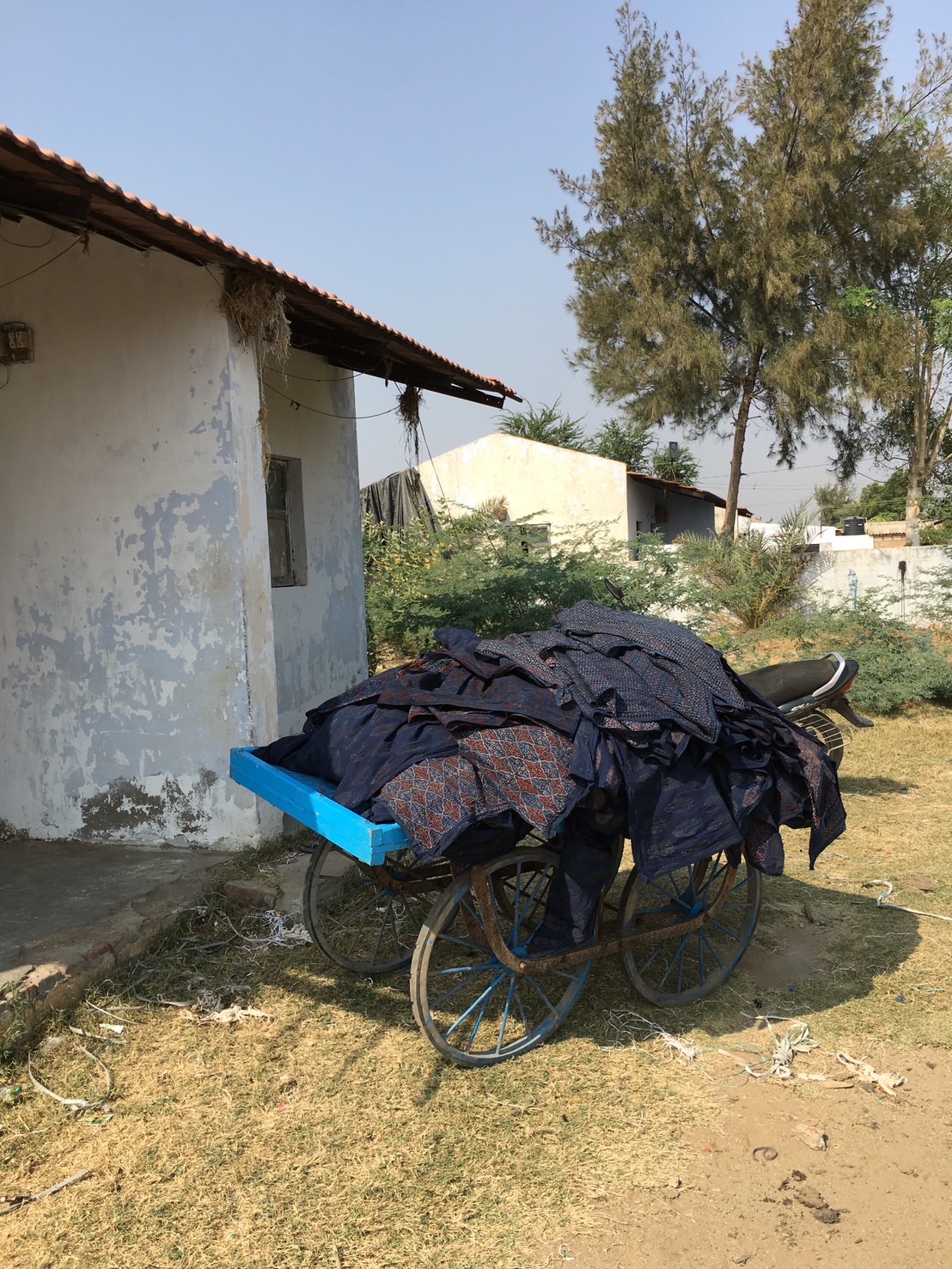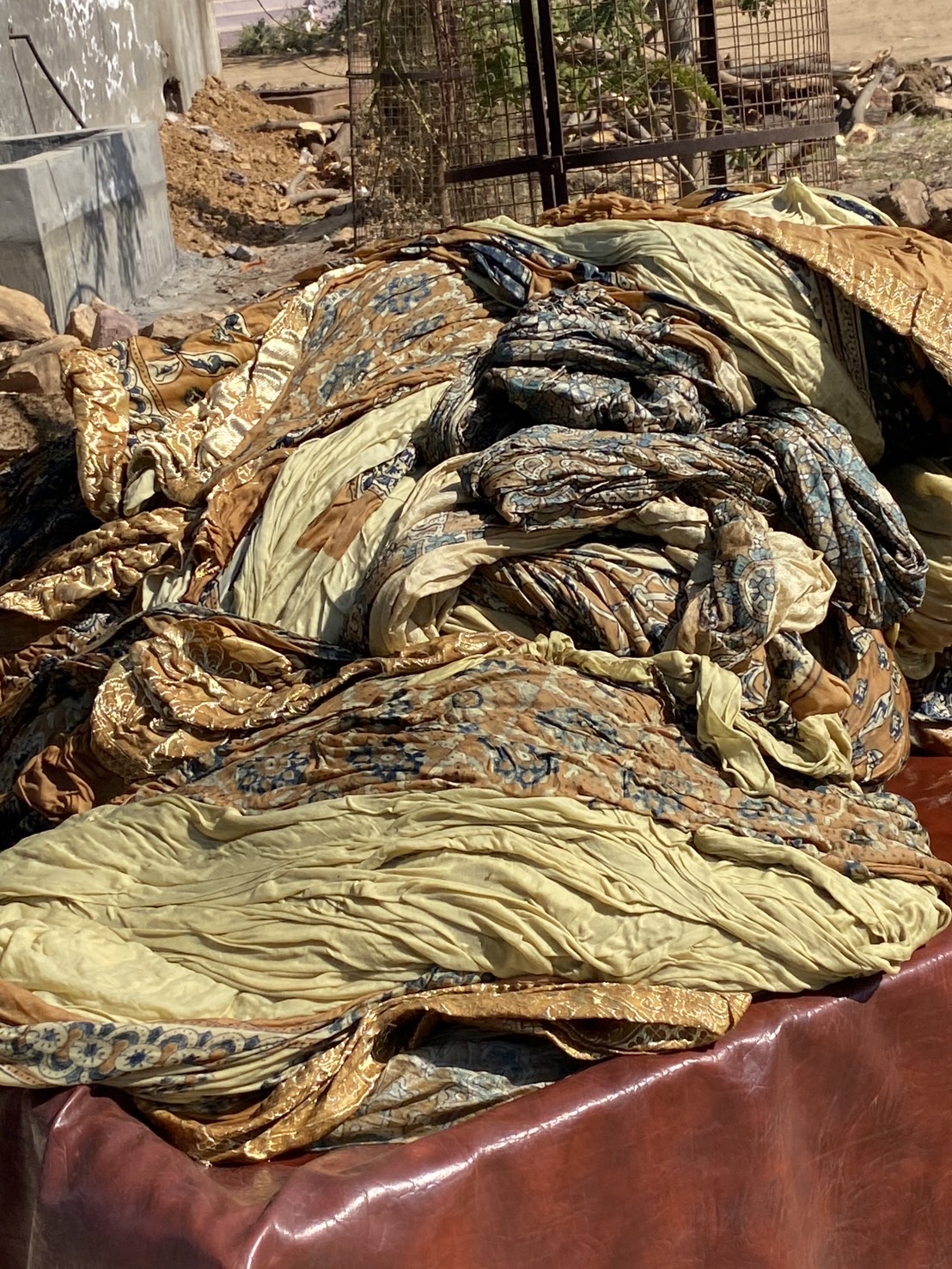Free Press
Kazuya Tatsutomi
Ajrakh

Ajrakh is a traditional block print fabric made in the Kutch region Western India. This fabric was originally made to be worn over the shoulder or wrapped around the head and waist. The basic colors are the blue of Indian indigo, the pale red of Indian akane, and the black of iron oxide, which was used in the past in Japan to blacken teeth.
Last year brought unusually heavy rains, which hampered the production of Ajrakh. Our Ajrakh dyeing was also delayed, and Sufiyan, the head of a group of artisans, was beginning to worry. The original Ajrakh often featured geometric patterns said to have been designed by the ancients in honor of the universe and its numerous constellations, but Sufiyan is also interested in creating innovative designs. He expressed his delight with our floral design and was involved from the very beginning with the carving of the woodblock. In Sufiyan’s studio, hand-woven Kala cotton, a species indigenous to the region, is pinned to a printing table. As Sufiyan watches, the artisan’s deeply wrinkled hands dip the woodblock in a resist dyeing liquid made of gum arabic and lime, and then press it hard into the cloth, revealing the faint outline of a floral pattern. “It’s a good design,” Sufiyan smiles, but he’s not relaxing just yet. This is because Ajrakh originally comes from the Gujarati word “aaj-rakh,” a word that can be interpreted to mean something like “the work goes on tomorrow”. There are indeed weeks of work to get through, so one must keep an eye on the weather and temperatures ahead. The fabric is mordanted according to the dye used. It is dyed, indigo-dyed, sun-dried, and washed many times in a large pool. Then it is indigo-dyed again, and then dried again. This process is the very soul of craftsmanship, refined over the course of three thousand years of hard work and love.
This Ajrakh of COSMIC WONDER fabric will be used to make dresses and stoles, bringing us both warmth in the winter and lightness in the summer. It is a magical fabric forever cherished by the herders of Kacchi.
January 17, 2025
Kazuya Tatsutomi




 Facebook
Facebook Twitter
Twitter